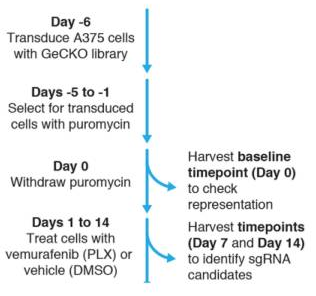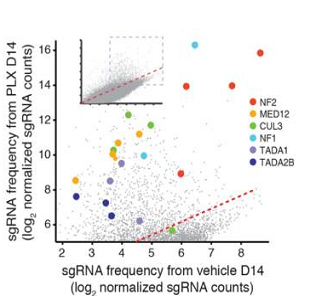The General Introduction of CRISPR Libraries Construction
CRISPR technology has become one of the most effective methods for gene/genome editing. CRISPR libraries/sgRNA libraries can simultaneously edit multiple genes in a signal pathway or an entire genome. This makes it a powerful research tool in CRISPR screening. Through functional screening and enrichment, PCR amplification, and deep sequencing analysis, the functional gene can be identified. With the same techniques, the related signal pathway and molecular mechanism can also be recognized. This technology has been widely used in physiology mechanism, cancer diagnosis, drug discovery, etc.
Synbio Technologies has more than ten years of high standard CRISPR gRNA library experience. We provide customers around the world with precise, efficient, and customized solutions. Some of these include sgRNA design, oligo pool synthesis, CRISPR library/sgRNA library construction, NGS validation, and high-content screening.
Highlights
-
![]()
- Precision Editing with Minimal off Target Effect
-
![]()
- One Stop Solution, Starting From Genome Wide sgRNA Design to Library Construction
-
![]()
- Construction of Any Type of Library for Any Species
-
![]()
- Fast Delivery of Transfection Grade Plasmids
Service Details
|
Service Specifications
|
Service Steps
|
Turnaround Time
|
|
sgRNA Design
|
sgRNA sequences are designed for specific genes.
3-6 sgRNAs for each target gene..
|
1-2 weeks
|
|
Oligo Pool Synthesis
|
All designed sgRNAs and negative controls will be synthesized simultaneously.
|
3-4 weeks
|
|
sgRNA Library Construction
|
Cloning sgRNAs pool onto the target vector
|
2-3 weeks
|
|
Plasmid Purification
|
Transfection-grade plasmid preparation to meet the shipping need
|
1 week
|
Library Quality
NGS Verification(Optional)
|
1.100x greater library coverage
2. >70% cloning accuracy rate
3. >99% library accuracy rate by NGS verification
4. <10 library uniformity index
|
2-3 weeks
|
|
Total
|
|
9-13 weeks
|
Workflow
Case Study
Screening resistance target genesfor a drug with identified function
Methods
1.The function and lethal dose of the drug have already been identified.
2.The CRISPR library was synthesized and transfected into cells using lentivirus vector.
3.Screen the drug of high concentration acting on the mixed cell clone continuously over a short period. Then rescreen the surviving cells. These cells are considered to be resistant to this drug. The reason why these cells gain a resistance to this drug is due to mutagenesis.
4.Perform NGS and bioinformatics analysis on the surviving cells, analyze information about the gRNA, and then identify the genes involved in conferring drug resistance.


Results
1.Identification of 6 genes involved in PLX resistant when mutant
2.Identification of NF2 as the resistant target of PLX in melanoma
FAQs
Most common species used with CRISPR technology can be designed. If a desired species is not listed, please reach out!
The delivery contains about 200 ug plasmids.
Some experiments that use synthetic sgRNA libraries include functional gene screening, Tumor Research, Cancer diagnosis, Drug discovery, and many more.
Get in Touch with Us
Related Services
 DNA Synthesis
DNA Synthesis Vector Selection
Vector Selection Molecular Biology
Molecular Biology Oligo Synthesis
Oligo Synthesis RNA Synthesis
RNA Synthesis Variant Libraries
Variant Libraries Oligo Pools
Oligo Pools Virus Packaging
Virus Packaging Gene Editing
Gene Editing Protein Expression
Protein Expression Antibody Services
Antibody Services Peptide Services
Peptide Services DNA Data Storage
DNA Data Storage Standard Oligo
Standard Oligo ProXpress
ProXpress Protein Products
Protein Products
































